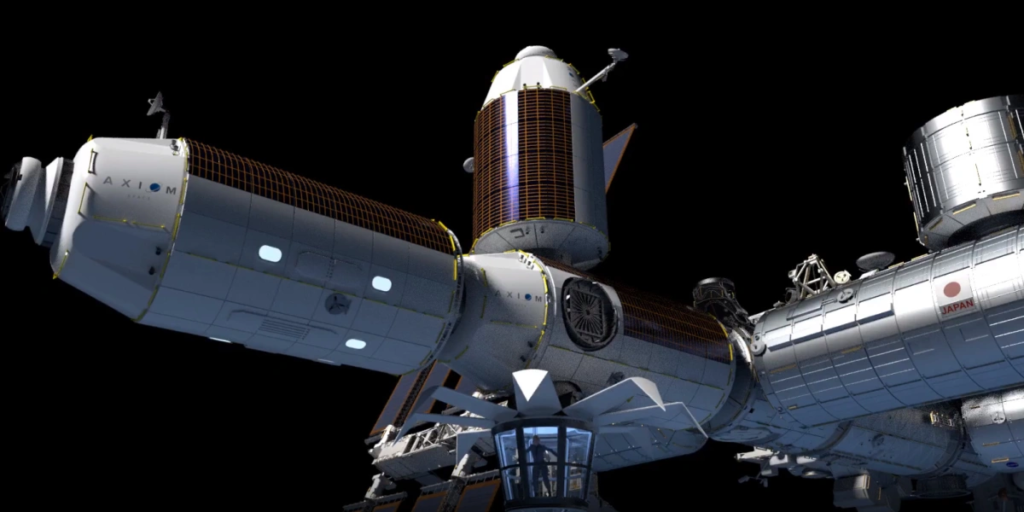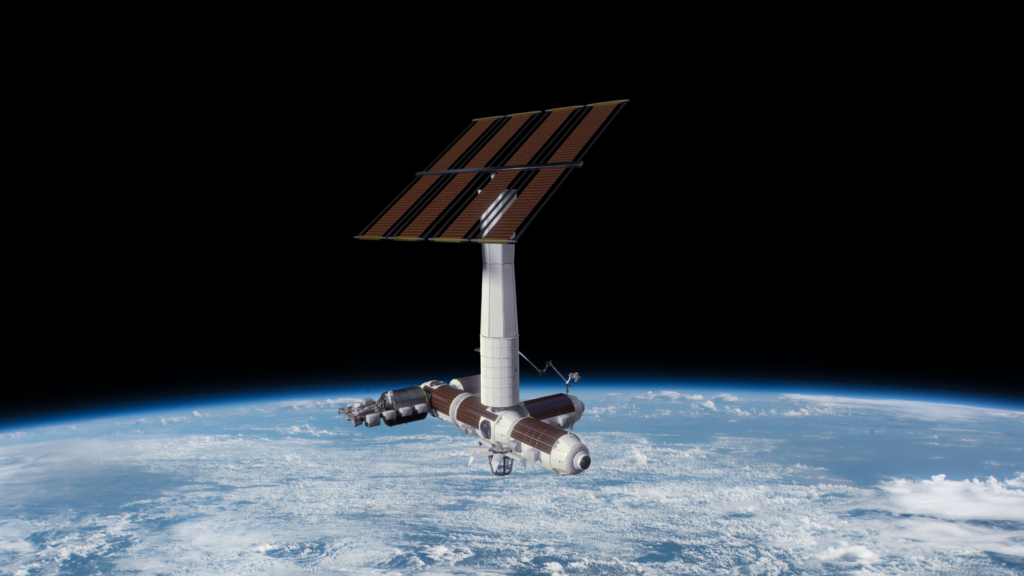
Life Inside The Worlds First Commerical Space Station
The International Space Station, after orbiting the Earth for decades, is set to be retired in 2031. As this date approaches, the need for alternative stations and destinations in low Earth orbit continues to grow. Axiom Space is a company with a unique partnership with NASA expected to create the world’s first commercial space station in only a few years’ time.
With this partnership, Axiom Space will send station segments into orbit over the next few years and connect them to the ISS. This will continue until Axiom has a fully capable station with everything needed to disconnect and become its own LEO destination. As progress toward this goal continues, we are learning more about the modules that make up Axiom Station and what life inside it will be like.
Between the largest windows ever sent into space, a modern design, and other features, the station is excepted to be quite different from anything we’ve seen to date. Here I will go more in-depth into the interior of Axiom Station, what progress the company is making, what to expect in the coming months, and more.
Inside Axiom Station

The Axiom Station consists of four different modules that together, create a fully capable and independent space station. Each of these modules has a slightly different design, purpose, and interior, to facilitate sleep, work, communications, research, etc. The first module that is already being constructed is Axiom Hab One. Hab One will have 4 separate crew quarters and will be the main living space for astronauts at the station. In addition to this, the module will feature all the life support systems necessary along with payload accommodation options. Images provided by Axiom give a better idea of what exactly the interior could look like.
When designing the crew accommodations, for example, Axoim worked with creator Philippe Starck who had one theme in mind: multi-directional freedom. In a quote, the company said, “The egg-like structure symbolizes nest-like comfort complete with unobstructed views of our home planet — the first such place for humans to truly contemplate our place in the Cosmos. The images show a padded room with a lot of warm lighting, a screen, and a window looking out into space. According to Axiom, the interiors are designed to enhance life in orbit, and to provide an added level of luxury to its forthcoming space station. In another quote, the station designer said, “My vision for the habitation module on Axiom Station is to create a comfortable egg that is inviting with soft walls and a design perfectly in harmony with the values and movements of the human body in zero gravity,”
After Hab One is launched and docked with the ISS, the next module will be Hab Two. Hab Two is practically identical on the outside to Hab One, but the interior is where things change. Rather than providing the main living area and crew quarters, Hab Two will only offer a secondary living space and will be primarily suited to a research capacity. This means we can expect to see a lot of technology and work space for science and different experiments which Axiom has expressed their interest in over time.
After Hab Two is docked, the next module will be the Axiom Research and Manufacturing Facility. Starting on the outside, this module is quite different from the two initial segments. For one, the end portion of the segment is actually a separate viewing room. After docking with the ISS, the plan is to disconnect this room and move it to the bottom of the station where it deploys its window covers and reveals a 360-degree observatory. Specifically, eight of the largest windows ever constructed for the space environment will encircle the Axiom Earth Observatory cupola, allowing Axiom Station’s entire crew to overlook the Earth in 360-degree freedom from orbit. As for the main Research segment, the rest of this space will be solely dedicated to research and especially manufacturing. Almost the entire interior will be filled with special equipment and technology.
You then have the final segment named the Axiom Power Thermal Module. This module is primarily service related and will provide power, extended life support systems, and some storage and payload capabilities. The interior will likely be almost fully open to allow the storage of different things. With all the modules together, Axiom Station is expected to offer a spacious and modern interior that differs from what we’ve seen so far in space. Once this power module is connected and up and running, Axiom Station will officially be ready to disconnect from the ISS.
Station Segment Launches

With initial segment launches planned to happen less than two years from now, progress is moving extremely quickly. The construction of the two first modules is well underway. Following the completion of preliminary and critical design reviews in collaboration with NASA, Axiom’s partners at Thales Alenia Space began welding and machining activities for the primary structures of Axiom Station. Not long from now the finished modules are expected to join the company in Houston where they will complete the final assembly and integration. As of right now, the first module is scheduled to launch in 2025 with the second, third, and fourth launching in 2026, 2027, and 2028 respectively.
This timeline gives the company some leeway considering the ISS retirement date of 2031. If the schedule and timing are perfect, Axiom should have a fully independent station years before the ISS is sent into Earth’s atmosphere to burn up.
Focusing more on the partnership, Axiom Space signed a contract with Thales Alenia Space to manufacture and test the primary structure and the Micrometeoroid & Debris Protection System for the two initial modules. With the completion of the Manufacturing Readiness Review back in September of 2021, the company was able to begin welding the cone panels of Axiom Hab One. As recently as April 10th, we learned that the large cylinder and cones of the Habitation Module will be combined very soon. The 4 white rings are the Integration Stand Jig used to clamp the module during the integration phase. Something we should expect more updates on soon. Even the large windows for the observatory are making progress. Currently, a test unit continues to undergo increasingly extensive vacuum seal and stress testing to confirm the design meets all leak rate, outgassing, and material deformation requirements.
In the next few years, the development and construction of this station will likely be different from anything we’ve seen in the past. The partnership with NASA and strategic connection allows Axiom Space to effectively adopt and service the multinational user base of the ISS National Laboratory to seamlessly continue research and manufacturing initiatives. In the future, the Axiom Space Station will host people, research, and manufacturing that could lead development for numerous industries using techniques that are available only in microgravity. The station will also service the rapidly expanding infrastructure and solutions operating in space and provide an accessible platform for private companies and national governments to continue the research and development of breakthrough innovations.
In just a few weeks, the company is preparing for another significant milestone in the form of the Ax-2 mission. Earlier this month Axiom tweeted saying, “ALERT. The #Ax2 mission is targeting no earlier than May 8 at 10:43 pm ET for the launch to the @Space_Station. Launching from @NASAKennedy, our multinational crew will fly on a @SpaceX Dragon to the station for their 12-day space mission.”
Just over one year ago, Ax-1 launched and made history with the private crew of astronauts. Now, the Axiom Mission 2 (Ax-2) astronauts are part of the latest class of space pioneers and Axiom Space’s next crew to expand access to the International Space Station (ISS) and low-Earth orbit. Aboard the orbiting laboratory, the four-person, multinational crew will conduct extensive research, investigate novel technologies, and engage with audiences around the world as champions of science, technology, engineering, the arts, and mathematics. Their efforts are meant to continue to lay the groundwork and establish the key capabilities needed to build out and operate Axiom Station.
The mission will be the first private space mission to include both private astronauts and astronauts representing foreign governments. As mentioned in the tweet, a SpaceX Falcon 9 rocket will launch the Ax-2 crew aboard a SpaceX Dragon spacecraft to the ISS from Launch Complex 39A at NASA’s Kennedy Space Center in Florida. Once docked, the Axiom Space astronauts plan to spend 10 days aboard the orbiting laboratory before returning home. At the same time as all of this is happening, Axiom is continuing to work on core features of the station such as avionics, hatches, general technology, and more. While building the world’s first commercial space station is by no means easy, Axiom is not far away from the first launch and eventually a complete orbiting laboratory.
Conclusion
The interior of Axiom Station will be modern, clean, and full of technology. Each of the four separate segments will have different themes depending on their purpose and size. We will have to wait and see how it progresses and the impact it has on the space industry.
